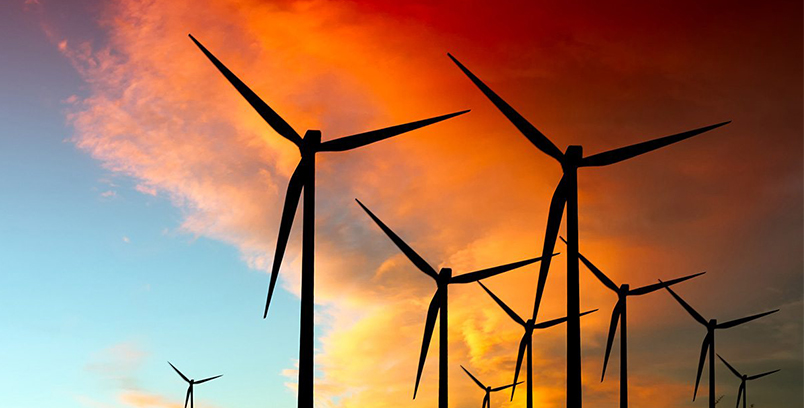- January 24, 2018
- Posted by: Zaeem Ahmad Khan
- Category: LMKT Blog

With the energy shortfall in Pakistan reaching 7,000 MW during the 2017 peak summer months, the country is looking towards wind energy and other renewable energy sources to meet its ever growing power needs. Expanding customer expectations, increasing environmental regulation, and new technology, urge the sector to improve its service and meet the customers’ energy needs in a smart, low-carbon way. Ironically wind energy makes up less than 1% of the total energy generation mix of Pakistan. Latest figures have put wind power generation in Pakistan at a mere ~640MW.
It is to be noted that in 2006 the country’s Alternative Energy Development Board was set a goal of producing at least 5% of the total National On-Grid Power through wind by 2030.
In a country where electricity demand reportedly increases by 8% to 10% annually, clean and renewable generation with enhanced energy efficiency must, and will, play a larger role. Record new installations of renewable energy capacity for the third year running and the rapidly falling technology costs indicate that a global energy transition is well under way. In Pakistan, due to the government’s active interest in the energy sector the country is beginning to reap the benefits of Chinese investment in the renewable energy infrastructure.
Pakistan now plans to add around 3.5 GW of wind energy capacity by 2020, signaling an approximately 500% increase in wind generation capacity.
Harnessing the true potential of this natural resource seems like a sensible policy especially when put into the context of the Pakistan Meteorological Department’s 2013 study on Wind Power Potential of Coastal Areas of Pakistan. The study identified potential “wind corridors” where economically feasible wind farm could be established, and highlighted the Gharo-Jhimpir wind corridor in Sindh as the most lucrative site for wind power plants. The wind power potential covered an area of 9700 km2 with an exploitable wind power potential of nearly 11,000 MW.
Installing wind turbines to produce power has become an attractive proposition for construction contractors, who in many ways often benefit from lenient policies of governments and get grants/subsidies from international organizations. With wind itself acting as the fuel in such projects they require no substantial capital input once installed apart from routinely scheduled turbines maintenance. Moreover wind farms are constructed in small units of tens of megawatts of generating capacity, requiring much smaller upfront costs than typically sized fossil fuel or nuclear power plants.
Presently, the country’s largest wind farm has the installed capacity of 100 MW.
Operational in Thatta (Jhimpir), Sindh, the project is a combined venture of Hydro China, Gold Wind China and United Energy Pakistan. Plans are also reported to be in the works for a 150-MW wind project in Jhimpir. The planned wind farm will be a joint effort of GE, Sapphire Textile Mills and Power China.
However, the dynamics and associated complexities of the wind power market itself make it necessary for the country’s technology sector to step in and do its bit to help the budding sector get off the ground. Grid operators, wind power producers and energy traders have a critical need to accurately forecast energy generation from wind and/or to offer bids in the day ahead market.
The recently signed integration grid code addendum by NEPRA for wind farms has enforced power generation capability forecasting using state of the art methodology.
This would mean mandatory forecast reports with real time visibility for the regulatory authority and the power purchasers, and harsher penalties for wind power producers in the form of “Forecasting Error Rebate”, upon deviation from the forecasted generation. But forecasting of wind power generation is a complex task, whatever the time-scale considered in fact today, wind power forecasting is recognized as a research field of its own, with connections to meteorology, mathematical modeling, and power system engineering.
LMKT has been working on an advanced wind forecasting solution for regulators and independent power producers of Pakistan. The solution is expected to be available for deployment in 2018.
About the Author

An energy sector enthusiast with a keen interest in smart grids and clean energy technology, who is presently working as an engineer at LMKT. He is also an avid Manchester United fan.

